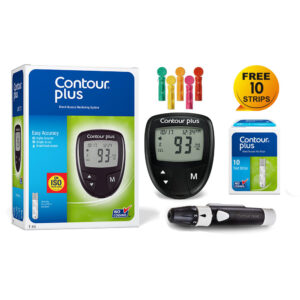BLOOD GLUCOSE MONITORING SYSTEM
BLOOD GLUCOSE MONITORING SYSTEM: The term “Blood Glucose Monitoring System” refers to a device or equipment used for measuring blood glucose levels in individuals with diabetes. It typically consists of a glucose meter (also called a glucometer) and test strips.
Use:
The Blood Glucose Monitoring System is used for self-monitoring of blood glucose levels by individuals with diabetes. Regular monitoring helps diabetics manage their condition effectively by guiding insulin dosage, dietary adjustments, and overall diabetes care.
Mechanism of Action:
The glucose meter in the Blood Glucose Monitoring System measures blood glucose levels through a process called glucose oxidase method. A small drop of blood is obtained by pricking the finger with a lancet. The blood sample is then applied to a test strip that reacts with the glucose oxidase enzyme, producing an electrical current. The glucose meter measures the current and converts it into a digital glucose reading, displaying the result on a screen.
Dose:
The Blood Glucose Monitoring System does not have a specific prescribed dose, as it is a tool for self-monitoring blood glucose levels. The frequency of use varies depending on the individual’s diabetes management plan, as directed by their healthcare provider.
Side Effects:
The Blood Glucose Monitoring System itself does not cause any side effects, as it is a measurement device. However, the finger pricking process may lead to minor discomfort, bruising, or infection if not performed correctly or hygienically. It is essential to follow proper finger pricking techniques and maintain good hygiene to minimize the risk of complications.
It is worth noting that the Blood Glucose Monitoring System is an integral part of diabetes management, and the results obtained from it should be used in consultation with a healthcare professional. Any concerns, issues, or abnormal readings should be discussed with the healthcare team for appropriate advice and action.




